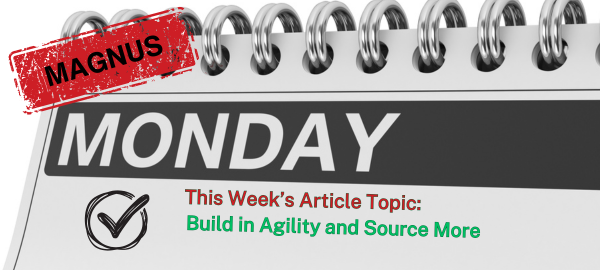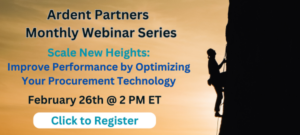The fact we are living in times of uncertainty should not have escaped anyone at this point. It’s been pointed out continually by pundits, with most CPOs aware of it as well. Whether it’s tariffs, geopolitical conflicts, weather events, new regulations, or suppliers struggling to stay in business, CPOs and their procurement organizations need to be ready to act in a moment’s notice.
In today’s article, I’m going to discuss two areas that are critical to navigating the troubled waters of our current international supply chains: risk monitoring and autonomous sourcing.
What’s Going On?
While it may appear evident that detecting and tracking events impacting the supply chain is essential, numerous procurement organizations still lack adequate risk monitoring capabilities. According to our 2024 Metrics that Matter survey, only a third of organizations have invested in supplier risk management solutions. However, nearly half of respondents stated they intended to invest in such solutions in the coming 12 months. It will be interesting to see in this year’s report if that bears out.
In any case, receiving supply chain notifications when events potentially impact regions or transit points of suppliers is vital to business continuity efforts. There are some risks, such as supplier financials, that enable procurement to track and measure risk metrics proactively. Having up-to-date financial information about your supplier can expose potential insolvency issues.
There is no shortage of solution providers in this space, ranging from the very specialized supply chain risk monitoring providers like Resilinc or Prewave, to more holistic supplier management solutions like apexanalytix, Graphite Connect or Kodiak Hub, all the way to the bigger suite providers like Ivalua, GEP, or SAP that often have extensive partner ecosystems of third-party risk data providers across a broad scope of risk areas.
What Are You Going to Do About It?
But knowing what’s happening is only half the battle. The other half is being able to do something about it. In some cases, your sourcing options might be limited; in other cases, you might have the capability to source from other approved suppliers. Depending on the spend category and context, what you can and should do can vary greatly. That said, something that is always valuable is the ability to rapidly run a sourcing event in the market.
Historically, running sourcing events has taken weeks (optimistically), but with modern autonomous sourcing solutions, it can be done in only a few minutes. Obviously, to execute an event that quickly requires a category preconfigured in the sourcing tool. Even without preconfiguration, such tools can condense simple sourcing events to just hours or days.
The innovation in autonomous sourcing has been driven by sourcing specialists like Fairmarkit, Globality, Keelvar and Pactum AI that have all come at this problem from different angles. This means picking the right solution depends on your context and spend profile. The bigger suite providers have also started adding automation capabilities and other options to their sourcing solutions.
Regardless of incidents and disruptions, it makes sense to ensure sourcing availability of your spend and the ability to source spend categories more frequently. Yes, some economies of scale might be lost but ensuring flexibility and market pricing can be worth it. These considerations should be front and center for your category management strategies.
So, unless you can track and monitor sourcing risks in your supply chain, it would be advisable to consider solutions with those capabilities. It is better to address your options now rather than post-disruption. Ardent Partners can help you find the right solution providers for you!


